Rock Climbing Injury Tips: Antagonist Strength Exercises
-

Photo Credit: Jensen Walker
Professional Climber Sasha Digiulian shows you the five best antagonist exercises to prevent climbing injury. It is important to strengthen the antagonist muscles in your body to increase strength, improve body symmetry and prevent injury.
The Importance of Posture
Climbing is a sport that develops many of the muscles that hunch your body forward into a poor posture. This is why climbers begin to develop curved spines and arms that rotate in. This hunched position can lead to weakness of the postural muscles that oppose typical climbing movement. These oppositional muscles are known as antagonist muscles. The development of antagonist muscles is necessary to protect your body from injury while climbing and belaying. Strengthening your antagonist muscles will improve your posture both on and off the wall. The photo above on the left shows poor climber posture while the photo above on the right shows improved climber posture.
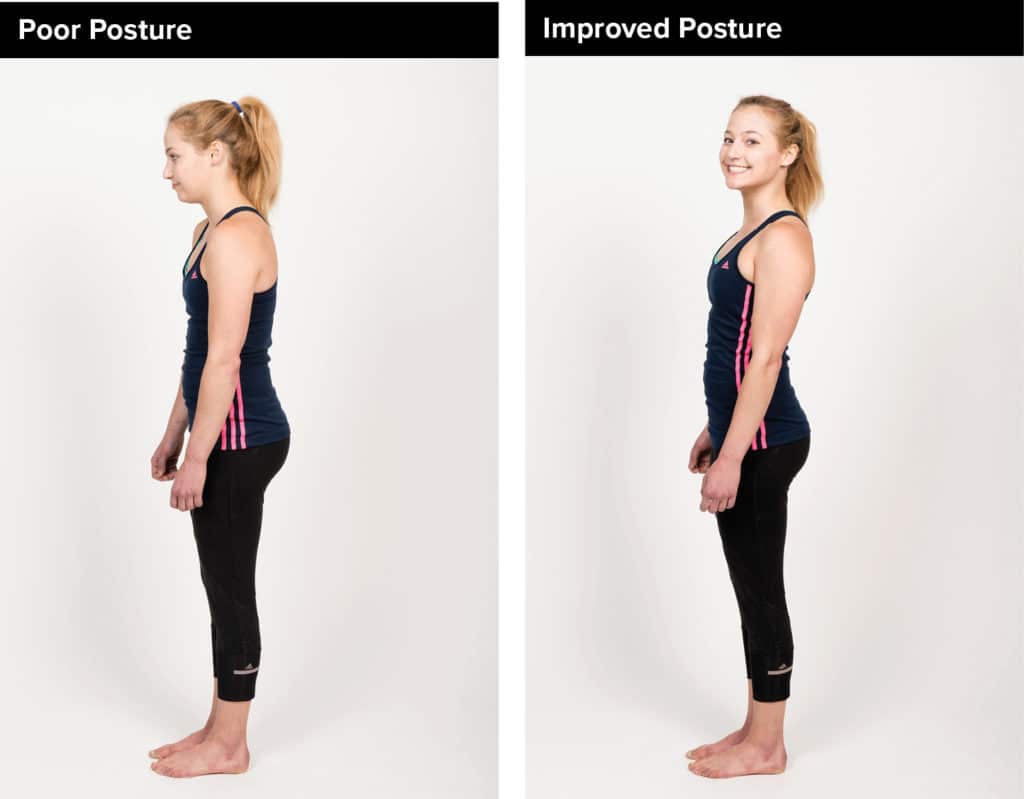
How Often to Perform Antagonist Exercises?
This antagonist exercise program below can be performed up to three time each day. Perform exercises for up to 1 minute each prior to climbing. Wall angels, band reaches and letter T’s strengthen posture muscles and should be performed with an isometric hold of 1 minute. Finger expansions strengthen finger stabilizers that should be held for 10 sets of upto 10 seconds each hold. Dowel lowers can be performed for 1 minute while extending the wrists back and forth.
Wall Angel
Stand against a wall with your feet 6 inches away and with your knees slightly bent. Tighten your stomach muscles so that your back flattens against the wall. Raise your arms to the side with the elbows at shoulder height. Bend your elbows to 90 degrees. Press your arms strongly into the wall while keeping your back flat.
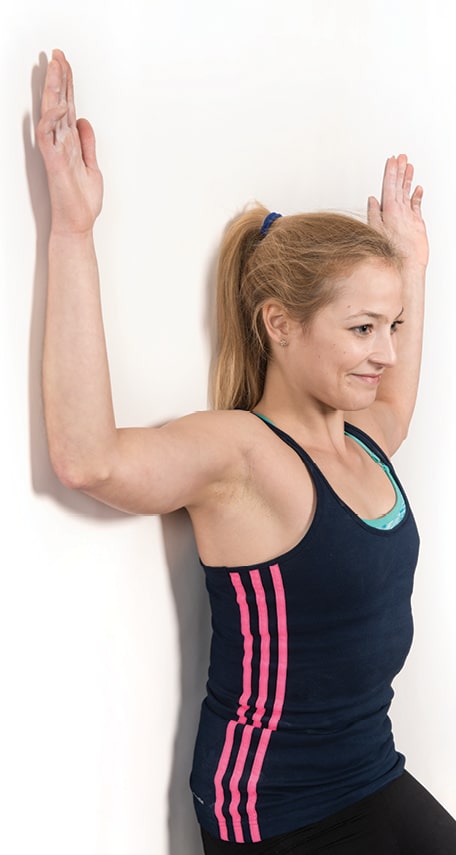
Band Reaches
Wrap a single resistance band around your wrists. Start with your palms facing either other. Press your wrists outwards on the band while keeping your arms shoulder width apart. You can advance the exercise by rotating your palms upwards toward the sky and raising your arms further overhead.
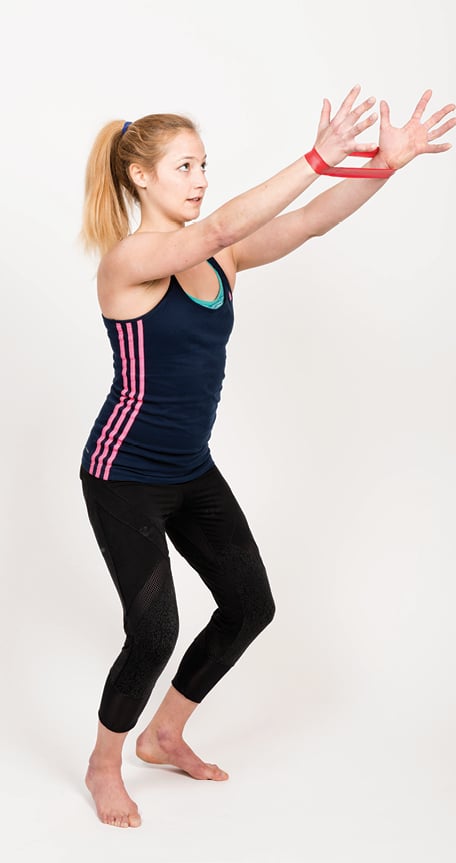
Check out the video below for an example of the band reaches
Letter T
Wrap a full length resistance band around your torso. Start with the arms straight down by your side and palms rotated forward. Engage your shoulder blade muscles and bring your arms into the air to form the letter T. Make sure that the thumbs stay pointed into the air.
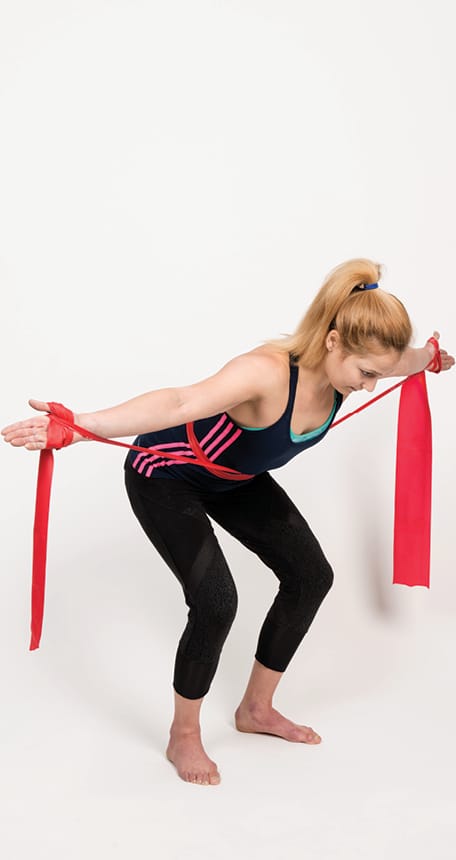
Check out the video below for the bent over letter T exercise
Weighted Dowel Lowers
Hold the dowel with straight arms at shoulders height in front of you. Make sure that the weight is wound up fully and touching the dowel. B. Slowly alternate flexing your wrists forward to lower the weight until it reaches the ground. Place the dowel on the ground to make it easier to wind back up. Wind the cordelette up until the weight touches the dowel. Stand back up and return to your starting position. Repeat lowering the weight.
Finger Expansions
Place a rubber-band around the tips of your fingers while maintaining a straight wrist. Spread your fingers apart without bending your wrist.
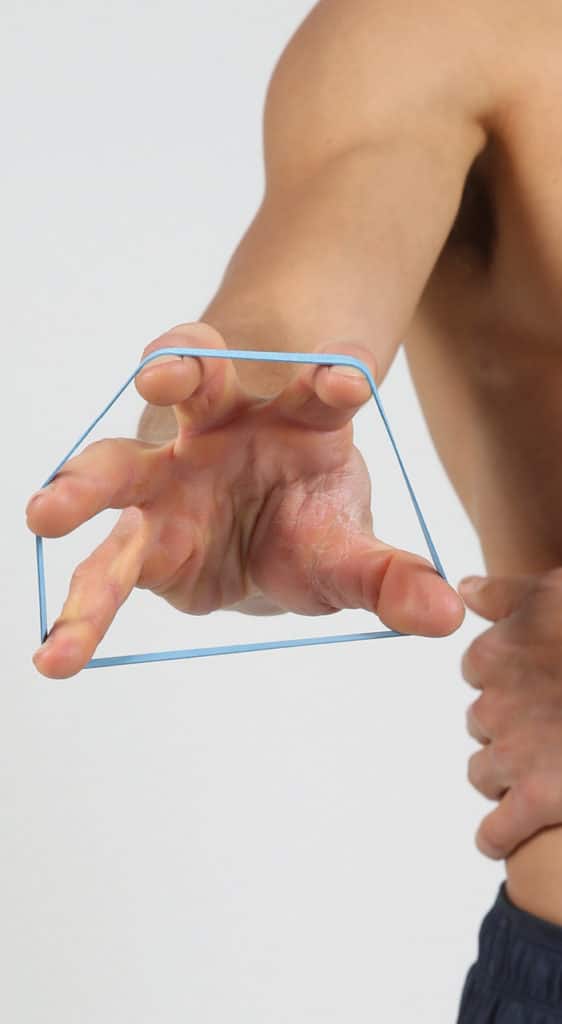
- Disclaimer – The content here is designed for information & education purposes only and the content is not intended for medical advice.

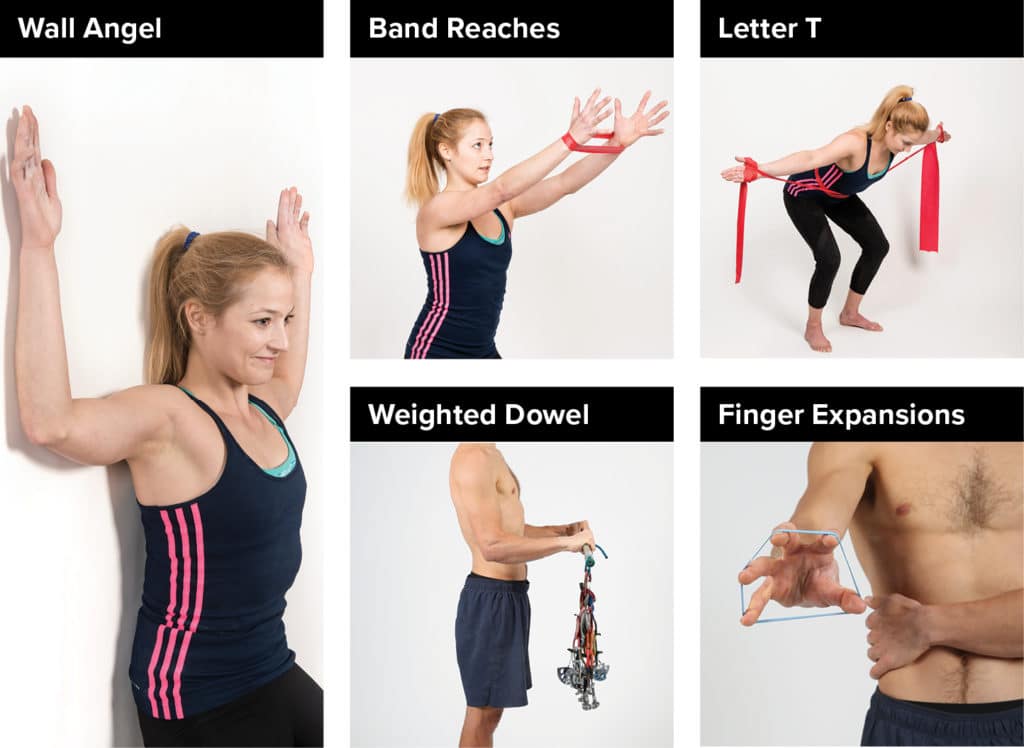
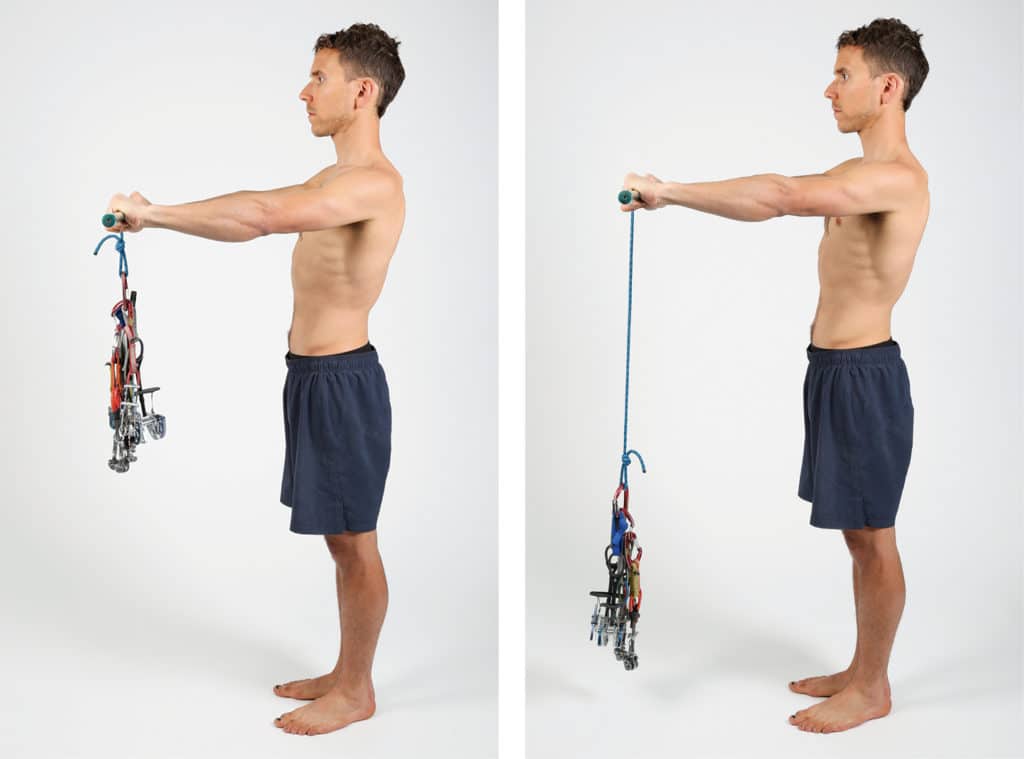


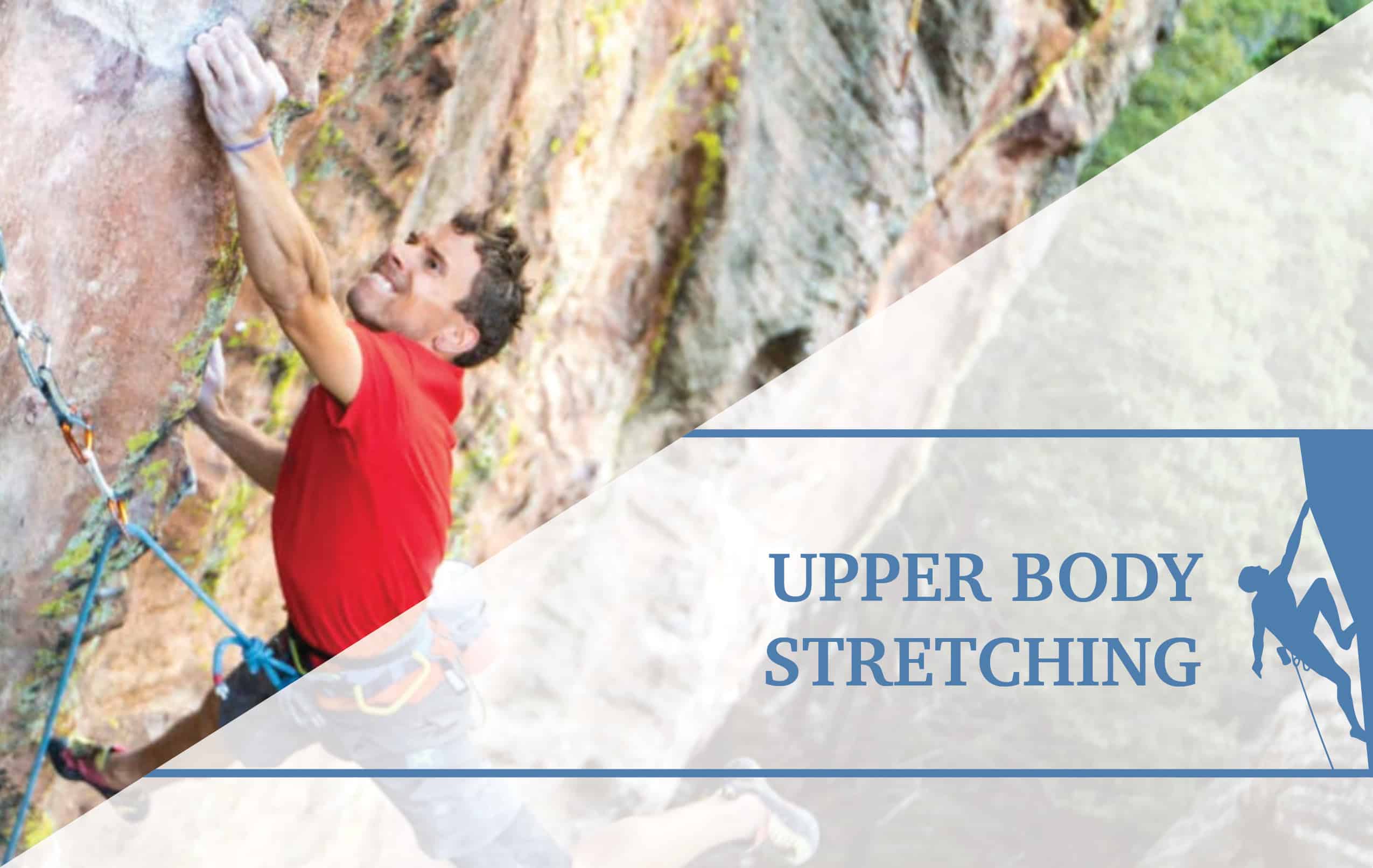
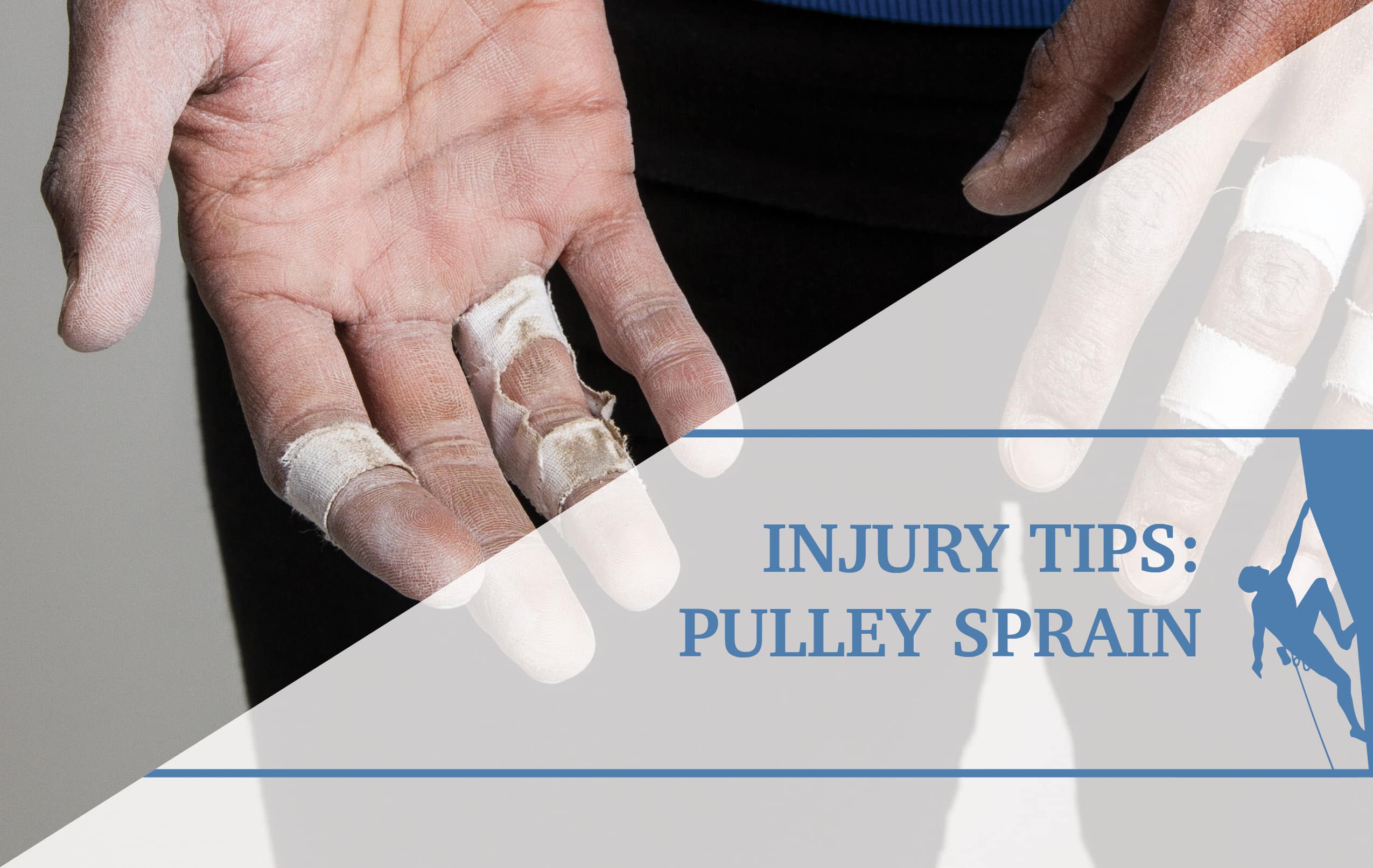
For the band reaches the written description mentions palms facing upwards and the photo shows palms facing each other. Is one way preferable to the other?
Hi John,
Thanks for the question. I have gone ahead and updated the exercise description to make it more clear. The goal of the exercise is to improve rotator cuff muscle performance. The image demonstrates the standard way to perform it. However, if you rotate your palms up and raise your arms higher, the demand on the rotator cuff external rotators increases. It is for this reason that rotating the palms upward is used an exercise progression.
Great content Dr. Vagy, very informative, I will make em a part of my workout!
Hi is there any video? i am a bit confused with antagonist exercises
Hi Savvas,
I have added two videos to the post to help visualize the more difficult exercises to perform. Hope that helps!
Hey Dr Vagy!
What’s the optimal diameter of the dowel?
Best,
Brian
Typically you want the dowel at least 18″ long and 1 to 1.5 inches thick in diameter. You can use a pvc pipe, broomstick handle or even really thick cardboard rolls. If you want to get more grip specific, you can use up to 6 inches diameter (such as a foam roll) to train the wrist extensors with the fingers in an open-hand grip or sloper position.
Hi Dr. Vagy! I just started your program today and I’m loving the videos so far, can’t wait for my book to arrive!
I was wondering about the wall angels: I was told to move my arms up and down through my entire ROM (short of pain) while keeping my wrists, elbows, and shoulder blades planted firmly on the wall. In your exercise description, it seems like you’re recommending more of an isometric exercise where you’re pushing your bent arms flatly into the wall. Would you mind clarifying this for me?
Thank you so much again! Great information.
Hi Laura,
You can perform the exercise isometrically as described by pushing your wrists, elbows, and shoulder blades firmly into the wall (if it is painful to move through a range of motion). Or you can perform by moving your arms up and down through my entire ROM (If it is pain-free moving through a range of motion). You can also vary by straightening your elbows. Hope that helps!